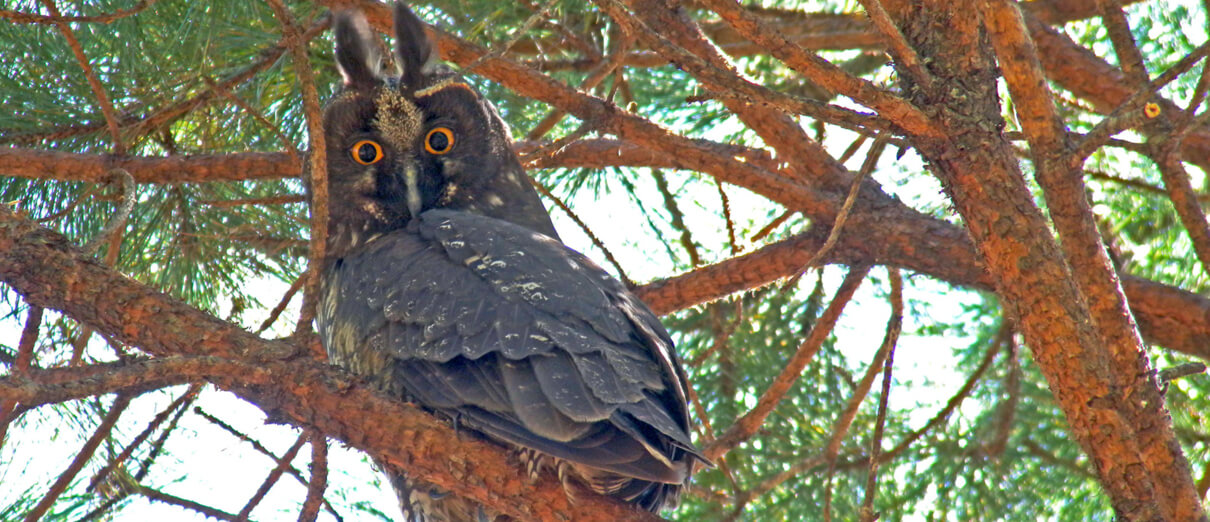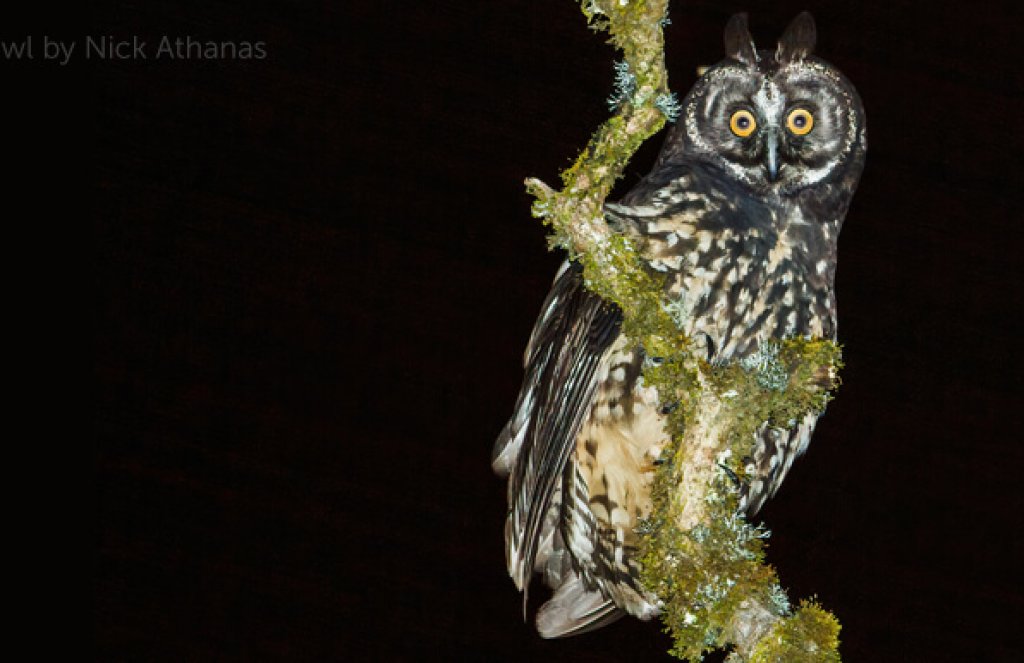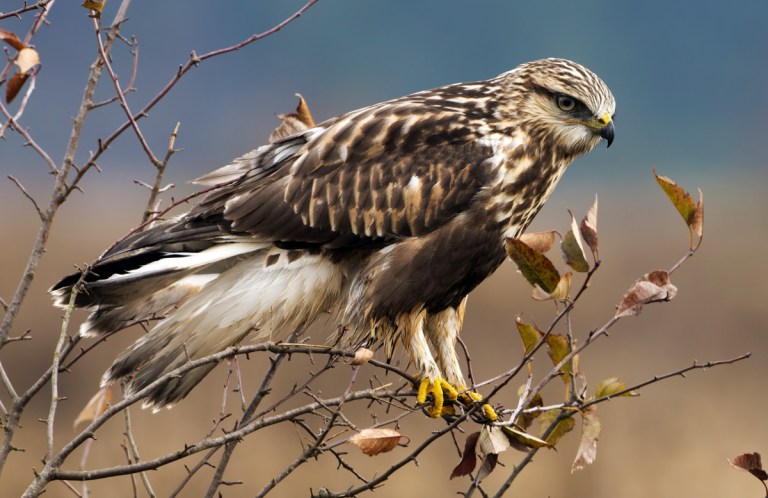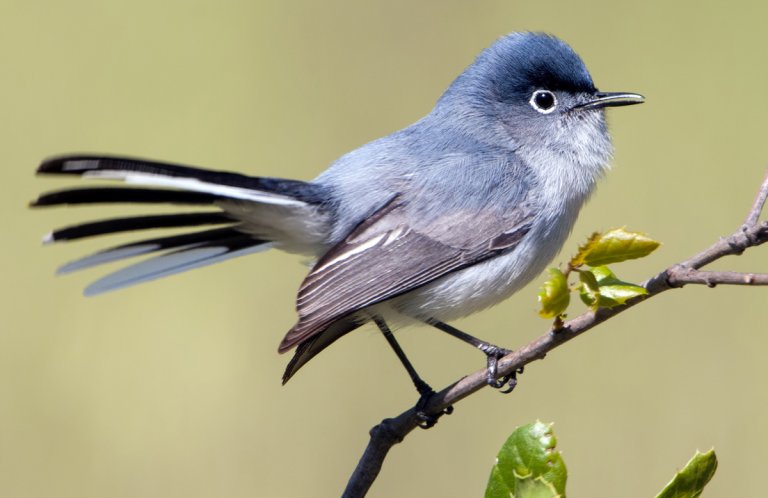
Stygian Owl range map by ABC
The Stygian Owl is one of the more mysterious members of an already elusive, often misunderstood family of birds. It's similar to a Long-eared Owl in structure, but the Stygian is larger and darker, with sooty-brown upperparts and heavy dark barring on its chest and belly. This owl's vivid, orange-yellow eyes glow bright red when illuminated by artificial light, and with some creativity, its long, close-set ear tufts can appear to be horns.
Its eerie appearance gives the Stygian Owl an otherworldly aura, and some human observers associate owls, particularly this species, with evil and witchcraft. In Brazil, the Stygian Owl is known as "coruja-diabo," or “mocho diablo” — the “devil's owl.”
Dark … and Devilish?
The word "Stygian" and the bird's species name stygius conjure images of the dark and gloomy River Styx of Greek mythology. The souls of the dead had to cross this river on their way to the underworld of Hades. Although “stygian” may simply be a nod to the owl's dark plumage, the association with the River Styx has given the bird an unfortunate connection to death and witchcraft, leading to unwarranted persecution.
In Cuba, this owl is called Siguapa, a name that is almost certainly related to Dominican folklore about a mythical creature called the Ciguapa, a frightening and dangerous being of the high mountains that has backward-facing feet and the body of a woman covered with long hair. It has been proposed that the legend was inspired by the Stygian Owl. However, curiously, people in the Dominican Republic do not know the owl as Ciguapa. It remains open to speculation how the similar words came to be used in both countries in presumably related, but different, ways. No matter how you cut it, when you hear the word Siguapa or Ciguapa, it means there is something spooky in the forest!
Uncommonly Mysterious
The Stygian Owl is widely, although sparsely, distributed in Mexico, Central and South America, and the Caribbean. It is nonmigratory, and six subspecies are currently recognized. Despite its broad distribution, this nocturnal bird is not often seen, and its biology remains little studied.
The Stygian Owl has a deep, hooting song, while the female utters a short, high-pitched "miah" when calling to a male. Listen here:
(Audio: Thiago Bicudo, XC144156. Accessible at www.xeno-canto.org/144156. Hans Matheve, XC154914. Accessible at www.xeno-canto.org/154914.)
A Different Diet
Unlike most owl species, including the Barn Owl and Snowy Owl, the Stygian Owl eschews rodents, feeding chiefly on small birds and bats. It scans for prey from a perch, then swoops out, snatching birds from their nighttime perches and capturing bats mid-air. ABC's George E. Wallace recalls seeing a Stygian Owl in Cuba that was perched in a broad, rounded tree. Periodically, the bird cocked its ear sideways, then flew straight up into the air and out of sight — presumably hunting bats. The Stygian Owl will also take amphibians, such as frogs, and insects including grasshoppers, crickets, and beetles.

Stygian Owl by Agami Photo Agency, Alamy Stock Photo
Much remains unknown about Stygian Owl breeding biology. The male has been observed clapping its wings under its body during courtship flights; the female usually nests in an abandoned stick nest of another bird, although this species sometimes nests on the ground like a Short-eared Owl. The female incubates the clutch of two eggs alone, while both parents contribute to feeding the downy young.
Saving Stygian Owls
As with other owl species, the Stygian Owl is vulnerable to persecution by people who are unaware of the beneficial roles played by owls, including pest control. Habitat loss is another threat to this owl and many other birds.
ABC's BirdScapes approach to bird conservation helps to protect habitats throughout the Americas, including the forests Stygian Owls share with Neotropical migrant birds such as the Wood Thrush, Hooded Warbler, and Yellow-billed Cuckoo.
The Stygian Owl can be found at a number of reserves in ABC's Latin American Bird Reserve Network, ranging from El Dorado in Colombia to Abra Patricia in Peru. The latter reserve is home to another mysterious owl as well: the endemic, endangered Long-whiskered Owlet.
Donate to support ABC's conservation mission!



















































